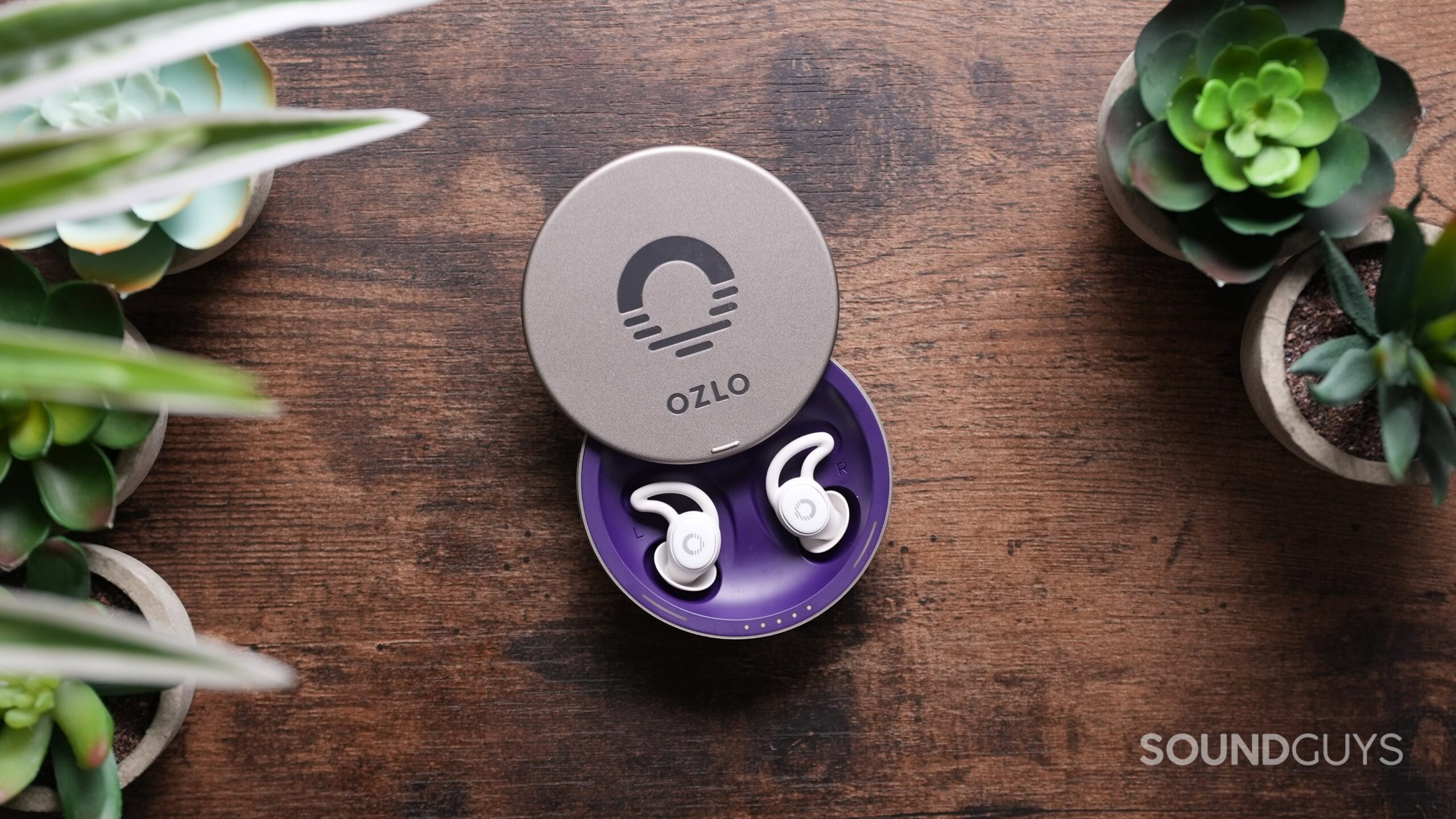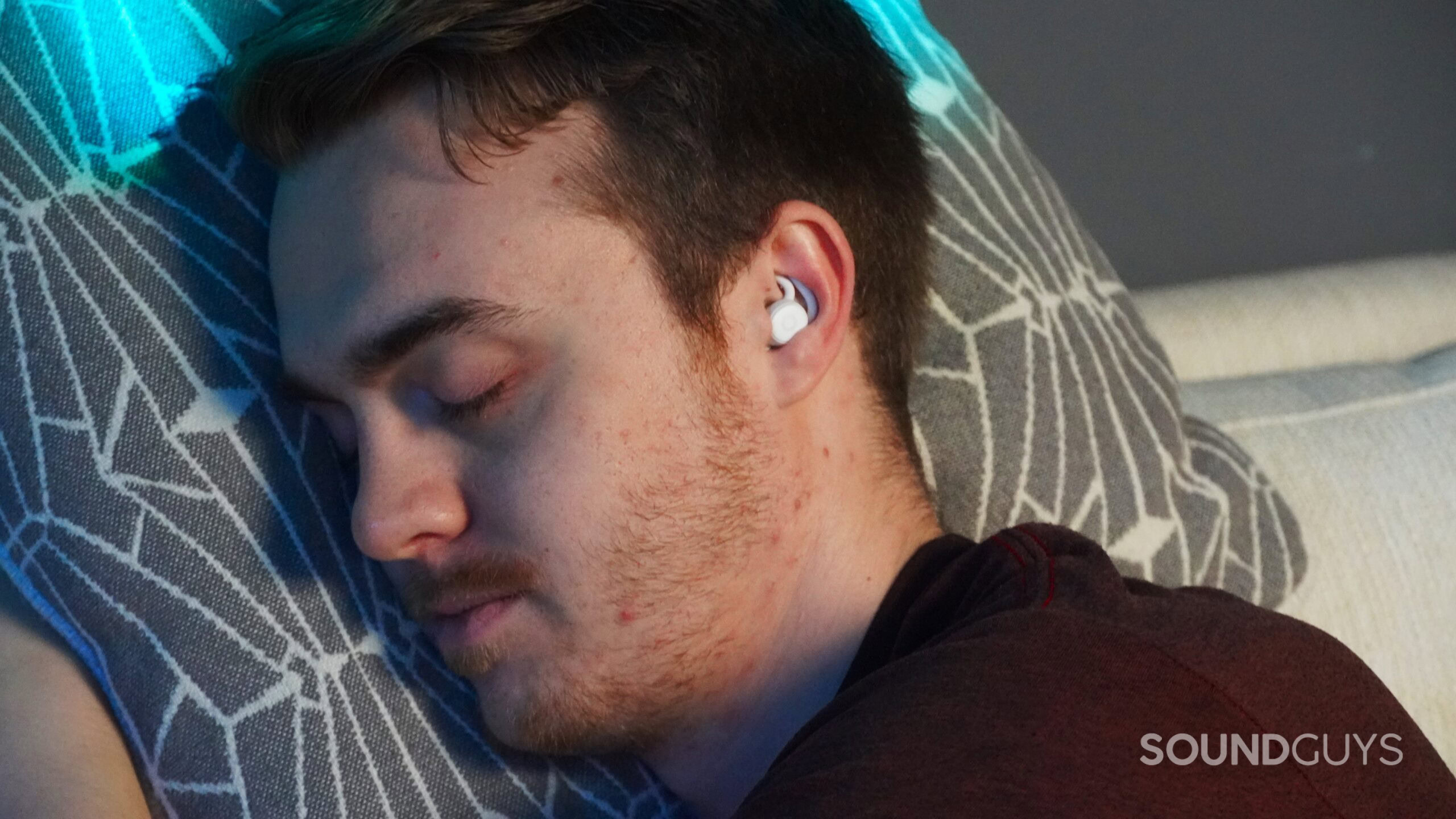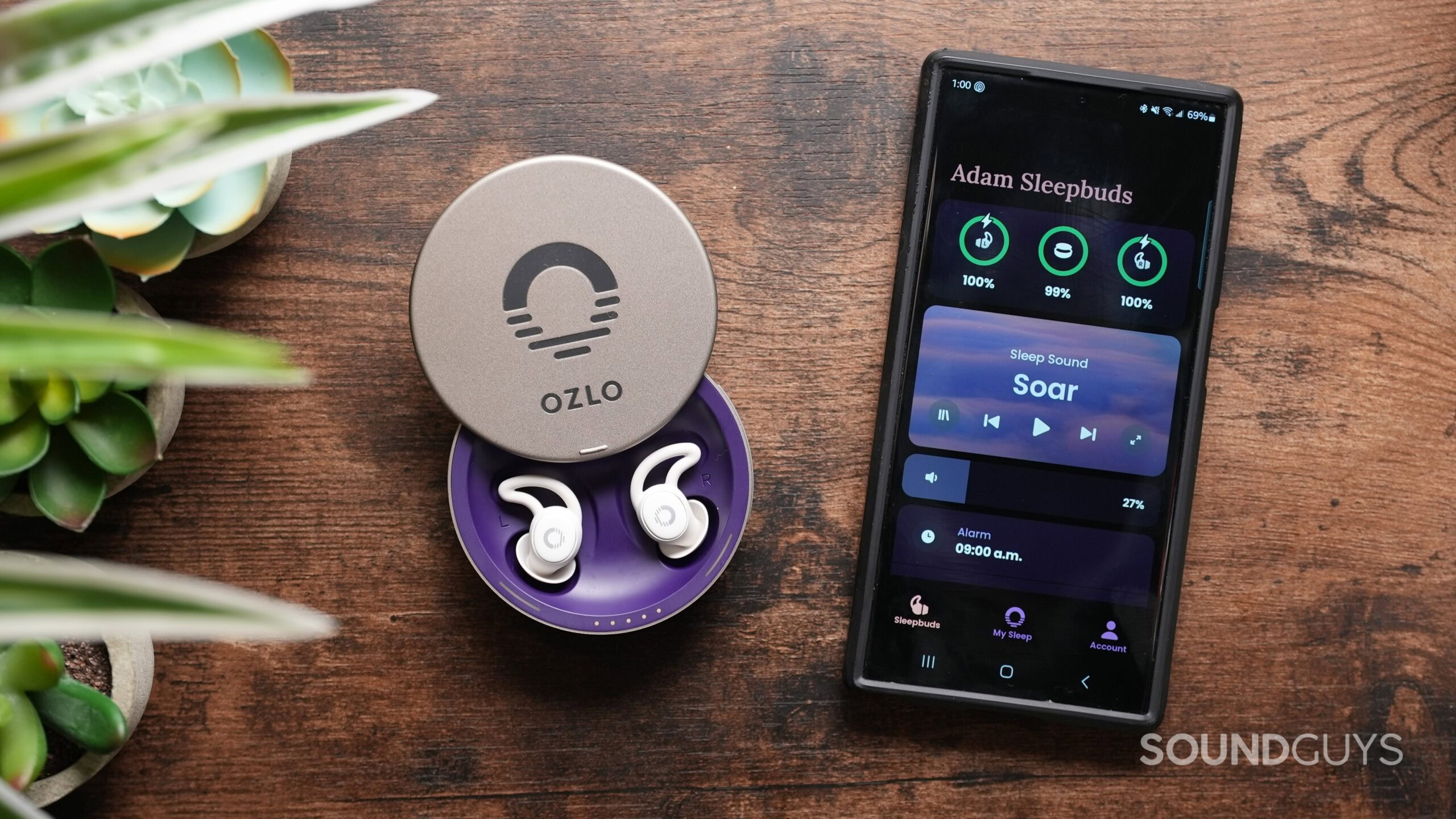All products featured are independently chosen by us. However, SoundGuys may receive a commission on orders placed through its retail links. See our ethics statement.

Ozlo Sleepbuds review
November 7, 2024
SleepBuds
The quest for better sleep has created a booming market for sleep tech, but few products have generated as much interest as the resurrection of the beloved Bose Sleepbuds. Now reborn as Ozlo Sleepbuds, engineered by former Bose team members, these premium sleep earbuds promise to deliver everything that made their predecessor great—plus some notable improvements. But at $299, they’re asking users to make a significant investment in their sleep. After testing them, I’m here to tell you if they’re worth it.
Ozlo Sleepbuds review: At a glance
- What is it? The Ozlo Sleepbuds are premium wireless earbuds featuring noise masking, custom audio streaming, and upcoming sleep-tracking capabilities. Created by ex-Bose engineers, they're essentially the next generation of the discontinued Bose Sleepbuds, now with the ability to play your own audio content.
- What is the price? The Ozlo Sleepbuds cost $299 upfront or are available through a $22/month subscription program called Ozlo Flex.
- Where can you buy it? The Ozlo Sleepbuds are available directly from Ozlo's website or online retailers like Amazon.
- How did we test it? I tested the Ozlo Sleepbuds for five nights, primarily using the built-in white noise features and testing the comfort for side sleeping. Ozlo supplied the review unit.
- Is it worth it? For those willing to invest in a sleep solution, the Ozlo Sleepbuds offer superior comfort and sound isolation compared to cheaper alternatives. However, with sleep tracking features still pending and a high price point, budget-conscious buyers might want to wait for feature completion or consider more affordable options.
What you need to know about the Ozlo Sleepbuds

When it comes to earbuds for sleeping, they need to be comfortable, and I’m happy to say that I was satisfied overall with the Ozlo Sleepbuds. The earbuds themselves are very small and compact and come with four sizes of ear tips (XS, S, M, L) to fit securely in your ear canal without protruding from your ears. Those eartips also have flexible silicon wings to stabilize along the concha so the earbuds stay in place as you toss and turn throughout the night. I sleep on my back and sides and never felt worried that they would fall out while wearing them. When sleeping on my sides, I did feel a bit of pressure from the earbuds when pressing my ears into the pillow, but it wasn’t uncomfortable enough to prevent me from sleeping.
Small, secure, and suitable for side-sleepers.
Like the former Bose Sleepbuds, the Ozlo Sleepbuds have a companion app with a library of white noise and soothing sounds to help you doze off. Some of these are better than others, my favorite being the “soar” sound, which sounds like the ambient hum of an airplane cabin. I was disappointed with the rainfall, and the fire pit sounds as they sounded quite muddied with a lot of distortion. I simply wasn’t able to hear individual raindrops or the crackling of the fire; instead, they sounded like a wash of static.
Unlike the Bose Sleepbuds, however, users can now play their own audio content using the Ozlo Speelpbuds, such as playlists or podcasts from any music streaming app. This is great for those who prefer to listen to their own selection of content for sleeping. Also, if you want the best of both worlds, there is an auto-switch feature, which transitions from your chosen audio to white noise after a set time. I used this to begin listening to a podcast and have it switch to white noise after I had fallen asleep (so that I could listen to the rest of the podcast in the morning). The app also has its own alarm sounds to wake you up, which are maybe a little gentler than what your phone offers.

For the time being, there are no sleep-tracking features available in the Ozlo app, but that is something that the app promises will be coming soon. For some, that might be a dealbreaker to hold off on buying them, and I do agree that the asking price is too high for what they currently offer at launch. For example, the Soundcore Sleep A20 earbuds cost half as much and have sleep tracking and a comparable white noise library.
With sleep tracking still 'coming soon' and a premium price tag, competing buds offer similar features at half the cost.
Pairing the Ozlo Sleepbuds to my phone was a bit annoying. Every time I wanted to pair, I had to hold the earbud in the case with the lid slid open for about ten seconds. If you take these sleepbuds out of the case too soon, they won’t pair, so you have to wait a bit every time. Hopefully, this can be improved in a future software update.
In our testing, the battery life was 9 hours and 28 minutes, matching that of the last Bose SleepBuds. Ozlo claims the charging case provides up to four days of charge time, and I never had to plug it in to charge once during my time with the earbuds.
How well do the Ozlo Sleepbuds attenuate noise?
The Ozlo Sleepbuds do not have active noise canceling to attenuate disturbances in the night. But they do have pretty good passive isolation. As you can see in the chart below, the passive isolation is most effective at blocking higher-frequency sounds (reaching up to 40 dB attenuation), with moderate performance in the mid-range.
Loading chart ...
This means the Ozlo Sleepbuds work well for blocking out typical environmental noises like air conditioning, distant conversations, or traffic, but may be less effective against low-frequency sounds like thunder or bass-heavy music from neighbors. The included masking sounds help compensate for some of this up to a point because you won’t want to turn the volume up too high when trying to sleep.
Thankfully, my partner doesn’t snore, but I did try playing a video of snoring sounds from my phone at a reasonable volume on the pillow beside me, and I was still able to hear those noises at a reduced volume without any white noise playing.
Should you buy the Ozlo Sleepbuds?
After five nights of testing, the Ozlo Sleepbuds deliver on their core promise: helping users achieve better sleep through comfortable, well-designed earbuds with effective noise masking. While they don’t feature active noise cancelation, the passive isolation and library of sleep sounds suffice for most sleep-disrupting noises.
What’s good:
- Comfortable design, especially for side sleepers
- Compact form factor
- Ability to play your own audio
- Solid battery life with convenient case charging
What needs work:
- High price at $299
- Sleep tracking features not yet available
- Finicky pairing process
- No active noise cancelation
- Limited library of sleep sounds
At $299, the Ozlo Sleepbuds are a significant investment—double the price of alternatives like the Anker Soundcore Sleep A20 ($149.99 at Amazon). However, considering sleep quality’s impact on overall health and wellness, the premium may be justified for those who want a superior, comfortable fit.

Ozlo Sleepbuds review: FAQs
Yes. Unlike the original Bose Sleepbuds, Ozlo Sleepbuds can stream audio content from your device, including music. However, they’re optimized for sleep, so if you’re primarily looking for music earbuds, regular earphones would be a better choice.
While not specifically marketed for tinnitus, the combination of passive noise blocking and masking sounds can potentially help provide relief. Studies cited by Ozlo show their masking technology can help reduce stress and improve sleep quality. Consult your healthcare provider for specific recommendations.
Yes. Once set up, you can use them in “Bluetooth Disabled” mode where they’ll play your chosen masking sound from onboard memory. The alarm function still works in this mode since it’s stored locally.
They work with iPhone 12+ (iOS 16.4 or later) and recent Android phones like Google Pixel 6a+ (Android 12 or later).
Thank you for being part of our community. Read our Comment Policy before posting.